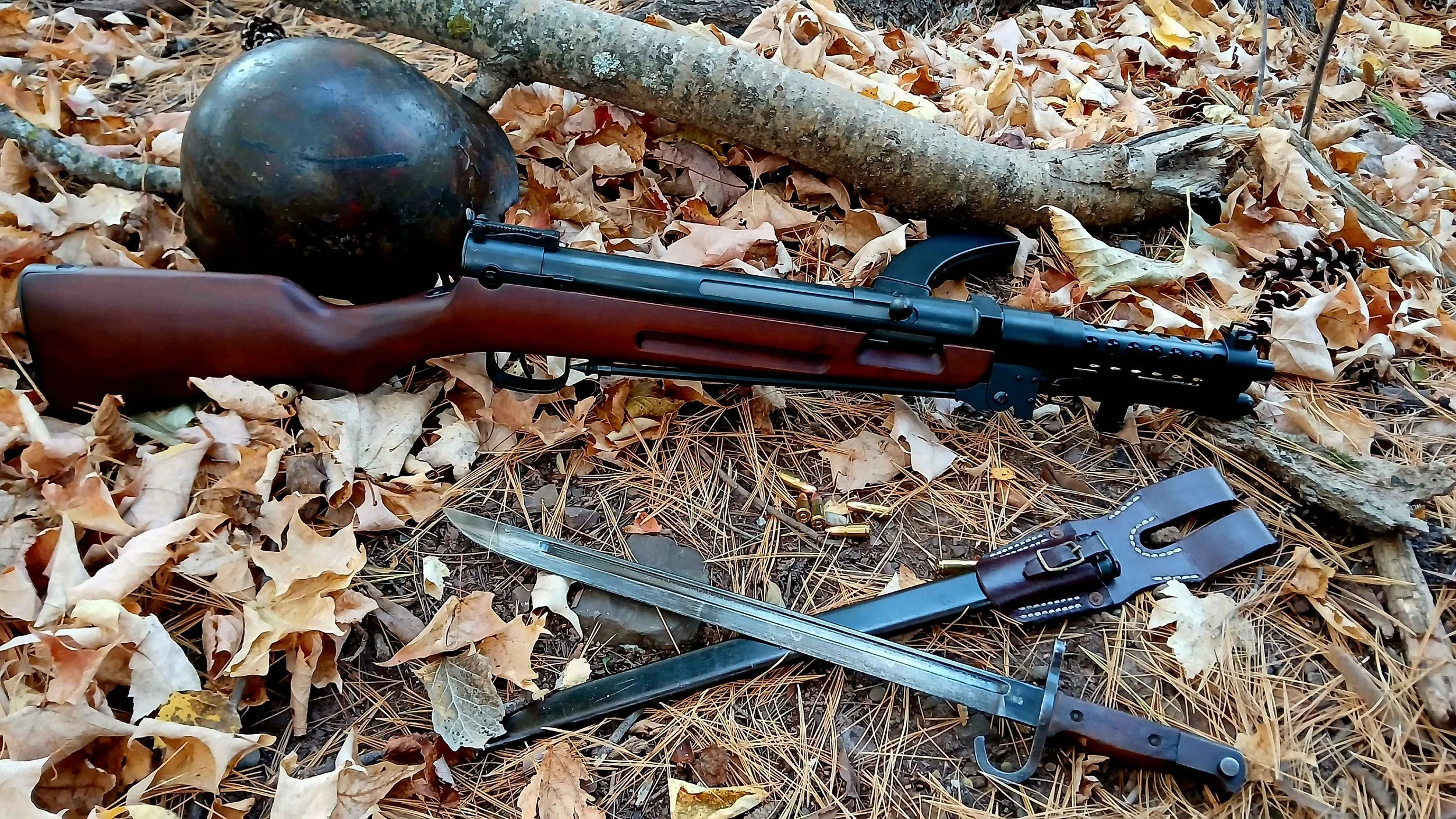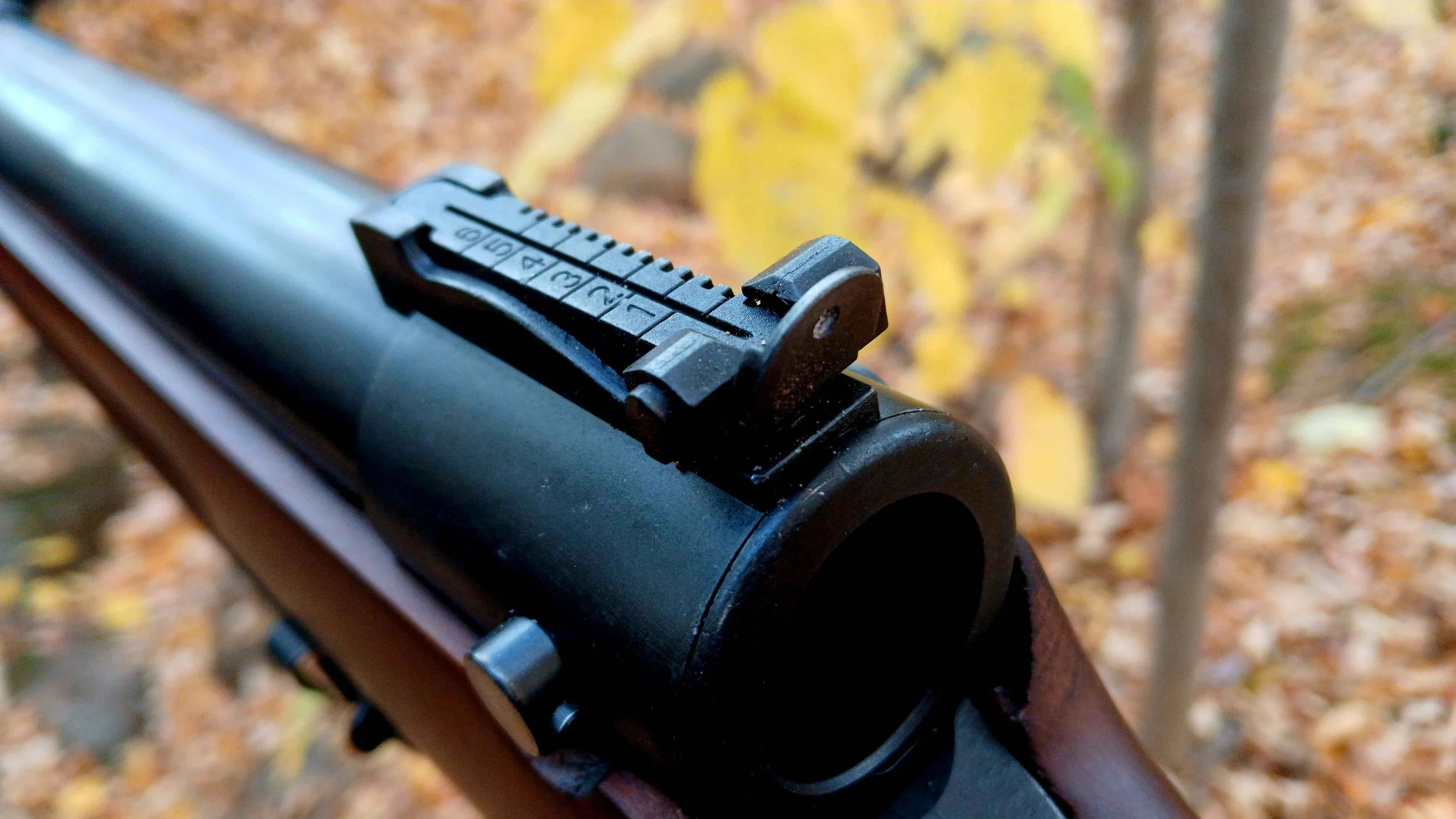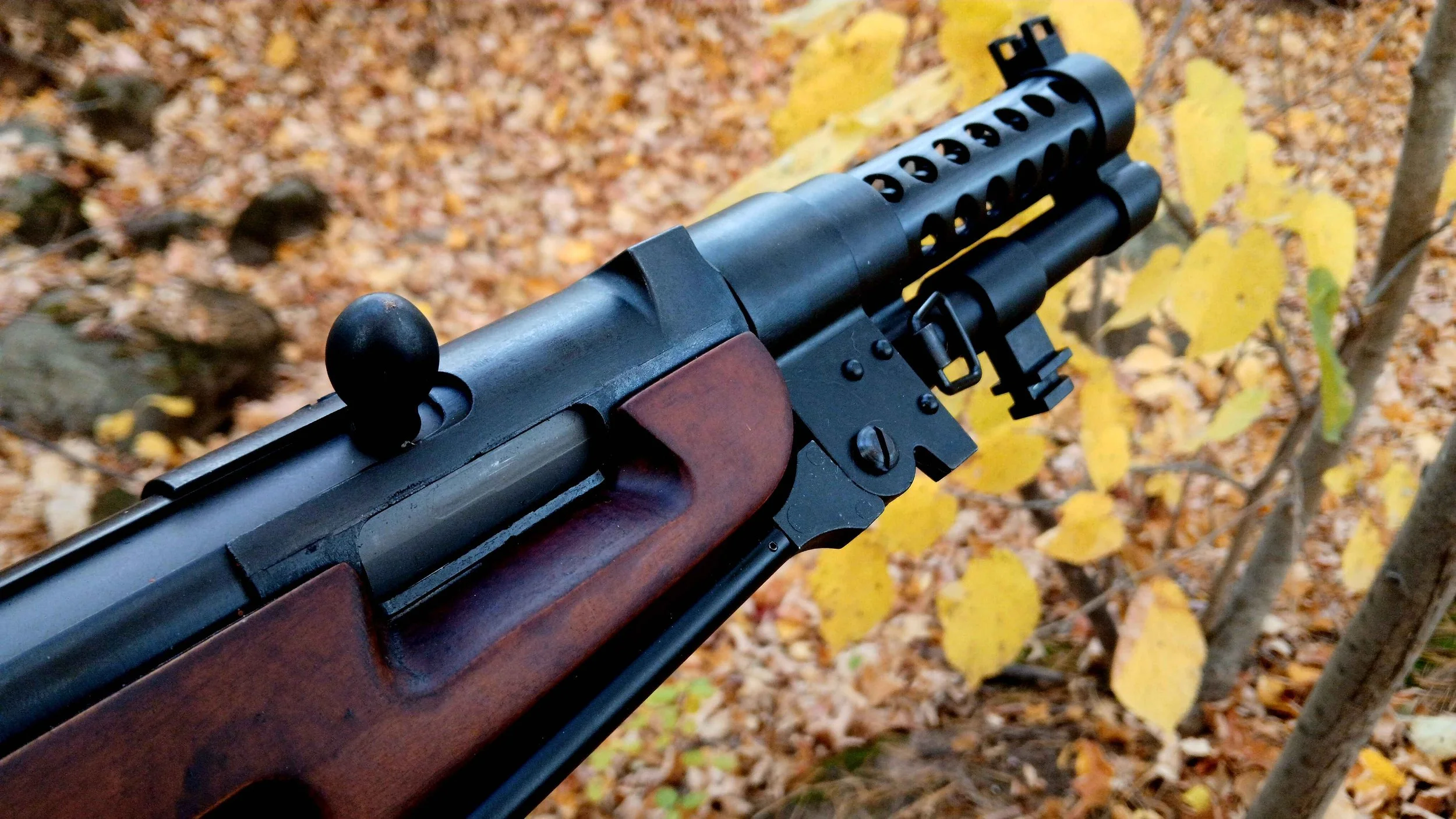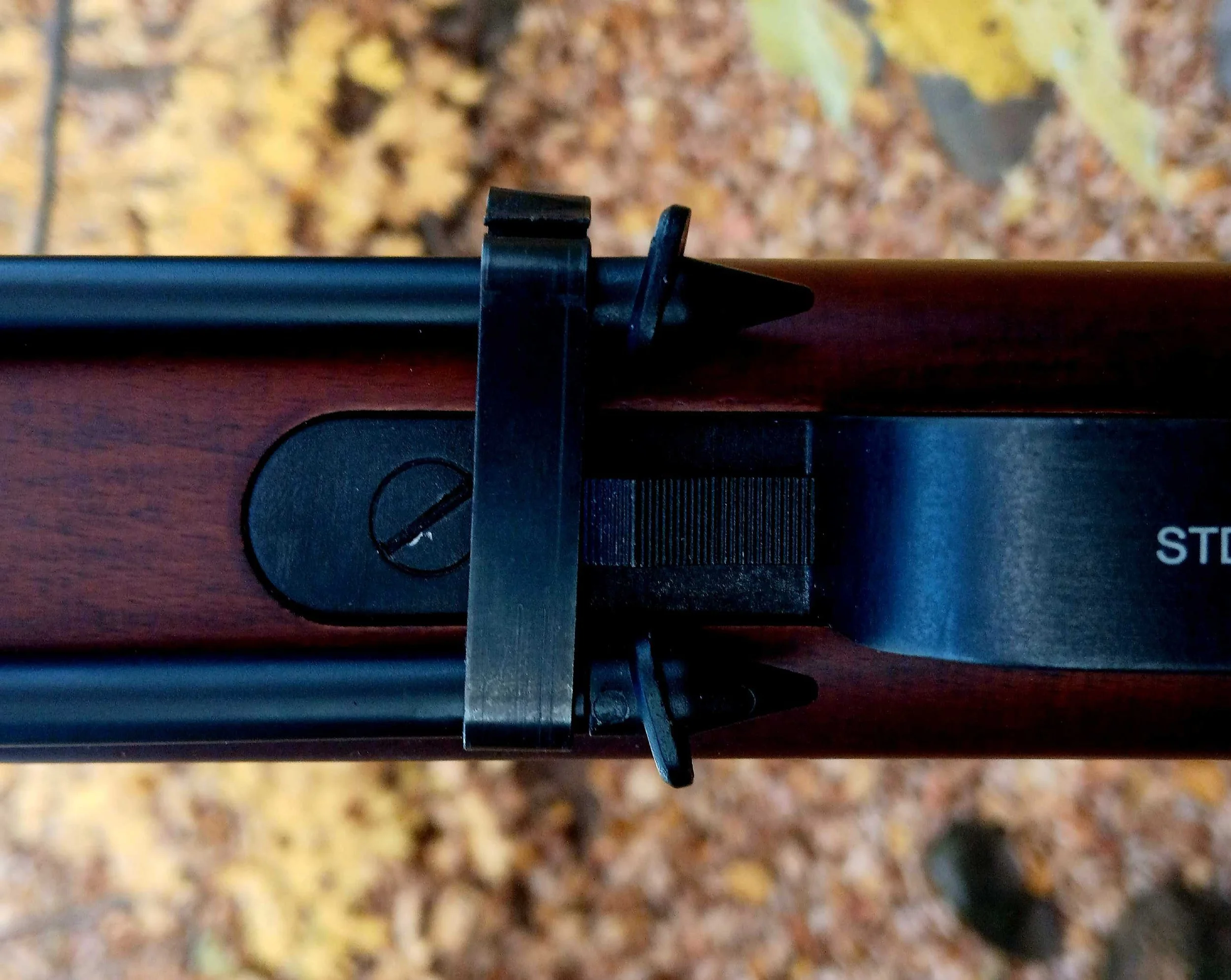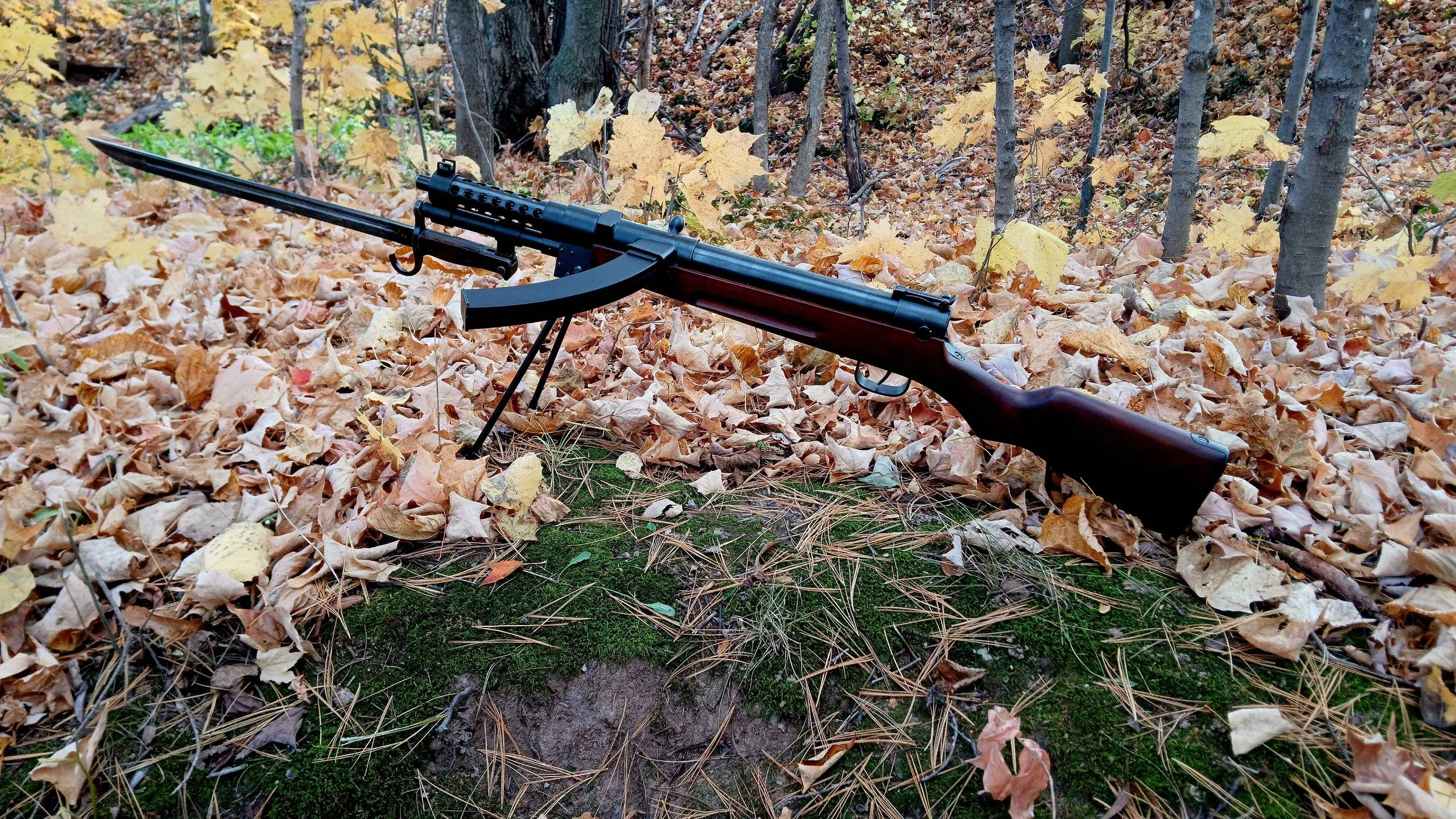Replica: Nambu Type 100
Despite a relative lack of interest in the concept during the Interwar Period, Imperial Japan would field a domestic submachine gun in small numbers on the eve of their entry into the Second World War.
The History
The involvement of the Imperial Japanese Armed Forces in the First World War was limited mostly to naval actions, with the notable exception of the siege and capture of the German concession at Tsingtao in China. During the conflict, the Japanese did not experience the trench warfare of the Western Front, leaving them to explore different avenues of design, development and procurement in the conflict’s aftermath.
Submachine guns had been fielded by German forces in the last year of the war, proving effective in close quarters situations and significantly improving firepower in such scenarios compared to the bolt action carbines of the day. Development around the world occurred, and by the advent of the Second World War in late 1939 most major powers had a domestic submachine gun in service, with the standard doctrine being to issue them to squad leaders and specialists.
The muzzle end of the weapon, showing its Arisaka-style protected front sight as well as the bayonet mount. Also of note it the lack of the flash suppressor generally seen on authentic Type 100s
The Emperor’s forces had made small purchases of such foreign designs, primarily of German and Austrian design, with the primary recipient of these being the Imperial Navy’s Special Naval Landing Forces (SNLF), roughly analogous to other nations’ Marine units. Development of a domestic design did not commence until the late 1930s, well into the Second Sino-Japanese War, as Japanese troops came into contact with Chinese forces in urban combat, their enemies equipped with German SMG types.
Design work thus fell to Kijiro Nambu, the prolific designer of a majority of the small arms in Japanese service at the time, with the work continuing through the end of the decade and culminating in 1940, with the new Type 100 design being approved for service (the designation reflecting the 2,600th year of the Imperial Calendar).
The rear sight is an aperture mounted on a tangent located at the extreme rear of the receiver
The new weapon was a conventional submachine gun, using a simplified MP18 mechanism at its core. Typical of Japanese designs of the immediate pre-war period, the Type 100 was rife with features, including a bipod and a large underbarrel bayonet attachment point, with some models also incorporating a hinge at the wrist to fold the stock, a popular feature for Japanese paratroopers.
Initial production and deployment was limited, with the first reports from Allied forces coming out of Guadalcanal in late 1942. As the war dragged on and the situation for the Japanese began to rapidly deteriorate an attempt was made to simplify the design, resulting in a simplified variation entering service in 1944. Sharing elements such as wooden buttplates with the late-war Type 99 rifles, as well as the deletion of items such as the bipod and the large bayonet attachment point, as well as the adjustable rear sight.
The downward angled ejection port, as well as the full bayonet mount and the bipod assembly
With the simplifications came significantly increased production, but even so when Japan capitulated in August of 1945 only around 10,000 had been manufactured. Due to its scarcity, as well as the diffculty in sourcing ammunition, its post war service was relatively limited, although it did appear occasionaly in the hands of southeast Asian insurgencies in the following decades.
The Design
The Type 100 is at its core a simple, blowback operated submachine gun, fitted with a Japanese style two piece wooden stock. It features a perforated barrel shroud, protected front sight and tangent adjustable rear aperture sight. The magazine is mounted on the left hand side of the receiver in the same manner as the earlier German MP18, and has a slight curve to accommodate the dimensions of the 8x22mm Nambu cartridge.
Forward of the trigger one can find the safety, as well as the bipod’s sheet metal retaining clip. Also visibile is the modern serial number on the underside of the trigger guard
interestingly, the ejection port of the Type 100 is canted downward at an angle of approximately 45 degrees, possibly to allow for smooth operation of the extractor or simply to allow for more controlled ejection (this is entirely conjecture on the part of the author, as without access to an original, functional Type 100 data is scarce).
The weapon features a pronounced underbarrel bayonet attachment system that is in not dissimilar in function to that devised by the Americans for their famous trench shotguns, featuring a false “muzzle” for the ring on a standard Type 30 bayonet. This attachment system was dropped entirely on the later pattern of the Type 100, replaced with a basic lug attached to the barrel shroud and using the actual muzzle of the weapon. A bipod is also integral to the weapon, consisting of wire legs joining a milled hinge on the receiver proper. This feature was deleted in its entirety on the later production model.
The replica with its bipod deployed and an original Type 30 bayonet attached (loosely)
This Replica
The Reference Collection features a modern made airsoft replica of the first pattern Type 100, manufactured by S&T. It features a single piece wood stock (as opposed to the spliced, two-piece used on originals), as well as metal components. As an airgun it features an internal mechanism with an electric motor.
While generally acceptable from an appearance standpoint, the replica is notably light, and the false muzzle on the bayonet adapter is too large to allow the attachment of the bayonet to the replica. Also apparent is the lack of the characteristic takedown pin on the stock below the rear sight.
Japanese paratroopers late in the war, armed with Type 100 submachine guns, mostly of the later model
Observed Values and Frequency
Updated: November, 2025
AVERAGE VALUE (USD): $400
FREQUENCY: Production
COLLECTOR’S NOTES: As a replica airgun, these remain in current series production.
